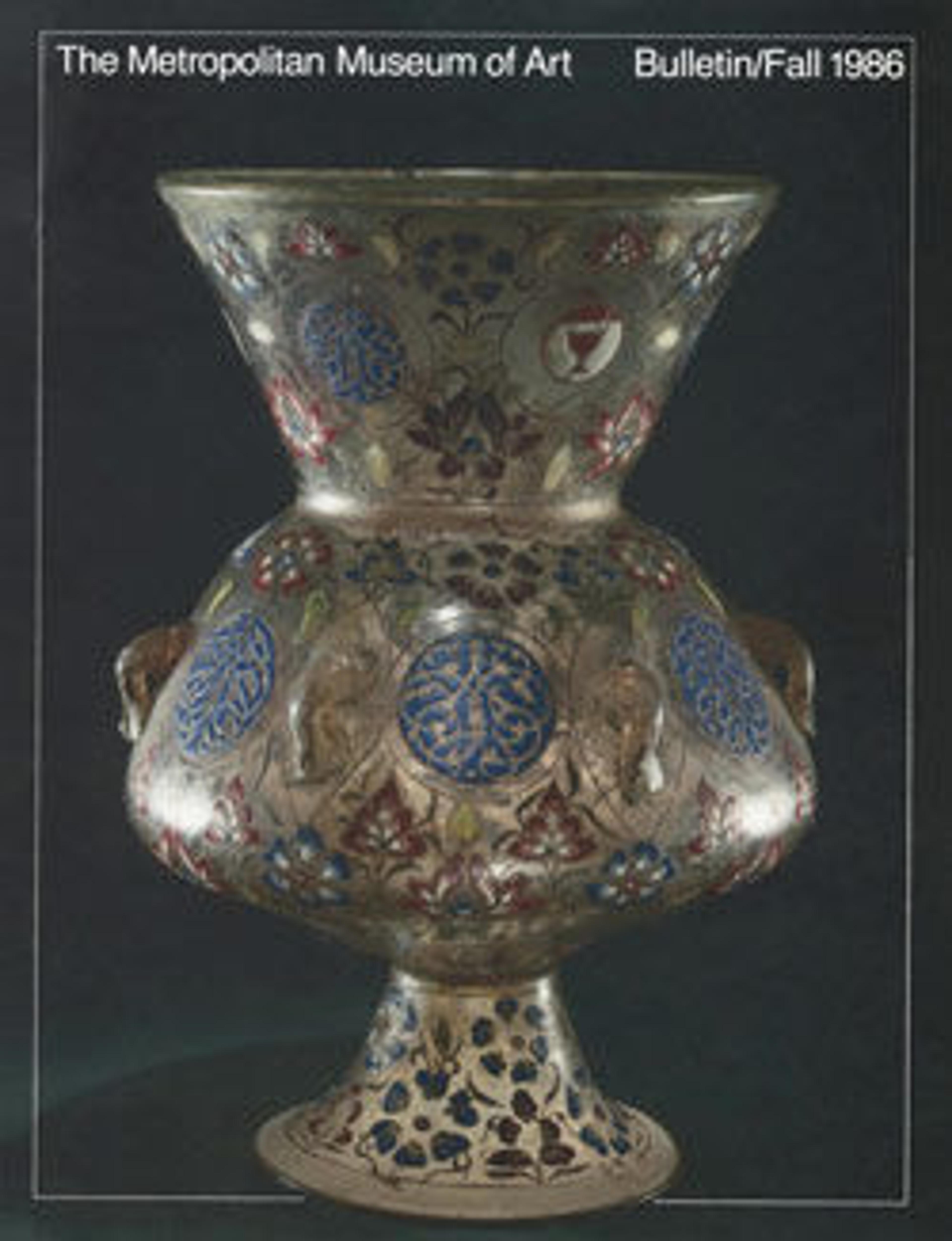Ewer with Molded Inscription
This ewer belongs to a group of about twenty similar objects. Nine of them, including this one, bear the same inscription and almost certainly were blown in the same full-size two-part mold. The inscription does not appear to include the name of the patron, but the glass- or mold-maker is mentioned and he remains one of the few craftsmen whose name is known.
Arabic Inscription: "What was made for the amir in Baghda[d]. The work of Tayyib ibn Ahmad Barmasi."
Arabic Inscription: "What was made for the amir in Baghda[d]. The work of Tayyib ibn Ahmad Barmasi."
Artwork Details
- Title:Ewer with Molded Inscription
- Date:9th century
- Geography:Probably made in Iraq
- Medium:Glass, greenish; mold blown, applied handle
- Dimensions:H. 4 3/8 in. (11.1 cm)
Diam. 2 3/8 in. (6 cm)
Wt. 1.8 oz. (50 g) - Classification:Glass
- Credit Line:Museum Accession
- Object Number:x.21.191
- Curatorial Department: Islamic Art
More Artwork
Research Resources
The Met provides unparalleled resources for research and welcomes an international community of students and scholars. The Met's Open Access API is where creators and researchers can connect to the The Met collection. Open Access data and public domain images are available for unrestricted commercial and noncommercial use without permission or fee.
To request images under copyright and other restrictions, please use this Image Request form.
Feedback
We continue to research and examine historical and cultural context for objects in The Met collection. If you have comments or questions about this object record, please contact us using the form below. The Museum looks forward to receiving your comments.
